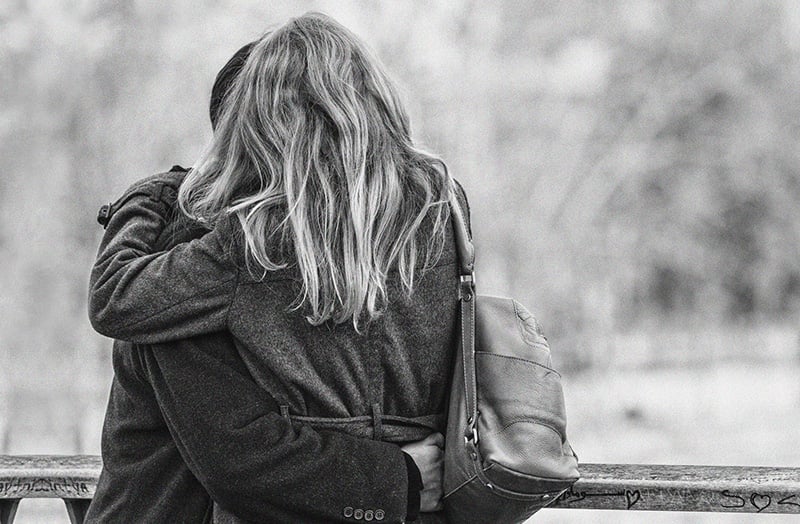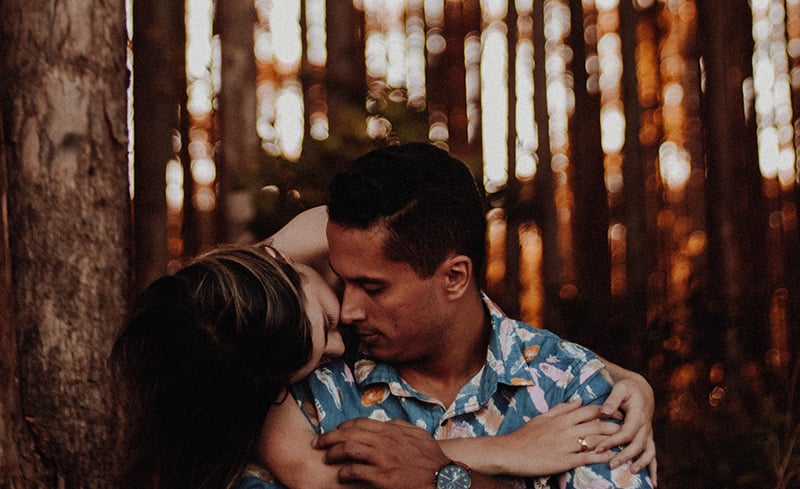
Sheri Louie fell in love with Kristina the moment she saw her at the group home for medically fragile children in Fresno. A licensed vocational nurse, Louie had spent years working with children like Kristina who need special medical equipment to stay alive. But something about the fragile baby with expressive eyes felt unique.
“I had a connection with her. It was more like how I felt with my daughter,” said Louie, whose biological daughter, Cynthia, is one year older than Kristina. “I loved all the kids there, but I loved Kristina different.”
Kristina has cerebral palsy, autism and Moebius syndrome, a neurological disorder that causes facial paralysis. She’s one of thousands of children with physical and developmental disabilities who enter California’s foster care system each year. These children often require specialized care, therapy and education services. Because of their disabilities, they can be harder to place with a foster or adoptive family — now called a “resource family” by the state — than children without disabilities.
Yet, like Louie and her husband, Kenny, many families do foster and ultimately adopt children with disabilities. That’s despite challenges these families often encounter, such as receiving insufficient medical supplies to care for the children and incomplete information from child welfare agencies about the children’s health histories. Foster families and their advocates are working to mend the gaps in the system that can cause undue stress on these children with disabilities, who, in most cases, have already been through trying times before coming into foster care. Because the children are considered wards of the state, advocates say that California should do more to protect them and ensure their health conditions are well managed. This is also a racial justice issue, because Black and Native American children are disproportionately enrolled in foster care, due to societal inequities.
Recent efforts by the state to improve supports for foster children and resource families, as well as streamline access to services for kids with disabilities and youth with mental health needs could help. A new phone line called the Family Urgent Response System provides 24/7 phone support to foster children and their caregivers, and a mobile response team in each county can visit families in crisis. California health and social service officials are also working to implement a 2018 bill that calls for better integration of care for children in the child welfare system who are receiving services from multiple public agencies.
But there’s more work to do to ensure the needs of foster children with disabilities don’t fall through the cracks, said Susanna Kniffen, senior manager of child welfare policy at Children Now, a children’s advocacy organization. In particular, she said, the county agencies that oversee foster placements need to do a better job of screening the children in their care for disabilities to ensure problems get identified early and kids get the appropriate support. Greater funding to hire more social workers who can oversee this and for the foster system generally would help.
“There are ways we are trying to support our foster parents either with specialized funding or with specialized services or wraparound care, but we never have enough,” she said. “There are so many students that have need, and as a state we haven’t yet stepped up for foster youth in the way that we need to.”
‘You want the child to have the best life that they can’
Theresa Mier, a spokesperson for the California’s Department of Social Services, which oversees the foster care system, noted that recent state policy reforms include an expansion of intensive services for foster youth with complex needs, and improved delivery of mental health care. The state’s current fiscal year budget includes $139 million to help counties address the needs of youth with complex needs such as physical and developmental disabilities.
The department does not compile data on the number of foster children with disabilities. However, studies estimate that about 33 percent of kids who enter foster care have a chronic health condition, and more than half of children under five in foster care have developmental challenges. Research also shows that children in foster care are far more likely than non-foster youth to require special education services, and four times more likely to have a mental health need.
Most children in the foster care system have suffered some form of abuse, neglect or trauma. Reports suggest children born with disabilities are more likely to be abused or enter the child welfare system, and that the trauma of experiencing abuse and neglect, as well as entering foster care, can also increase the risk of health challenges. Largely due to structural inequality and racism, Black and Native American children are more than three times as likely as white and Latinx children to be in foster care in California.
Rosemary Schulman of Culver City didn’t know anything about fetal alcohol syndrome when she adopted her son, M., at age 2, and later her daughter, B. (Their names have been withheld to protect their identities.) In fact, it took until her son was 15 years old, and her daughter 8 for them to receive fetal alcohol spectrum disorder diagnoses.
“I was like, oh my gosh, why didn’t anybody tell me?” said Shulman. “Because you do a lot of things wrong that make things worse, because you don’t know.”
M. began to show signs of hyperactivity, social immaturity and learning difficulties when he started school, and B had a speech delay and fell behind academically. Shulman eventually discovered her children’s fetal alcohol exposure after digging into their family histories, through self-education and medical assessments. She believes county social workers either withheld or failed to notice important information about her children’s medical histories that could have alerted her to the disorders sooner.
It’s common for resource families to receive inadequate information about foster and adopted children’s health histories, said Kniffen. In fact, many disabilities in foster children go unnoticed because of a lack of screening by child welfare agencies and schools. This makes it hard for caregivers to know how best to support these children and can compromise foster kids’ ability to succeed as they enter adulthood. Former foster youth are disproportionately represented in the criminal justice system and are more likely to be homeless or unemployed.
Shulman advises anyone seeking to adopt a child through a county agency to insist that they be assessed for any potential disabilities and set up with needed services before signing adoption papers. That way parents know what to expect and can ask for greater financial support to pay for the child’s medical needs. Shulman also encourages adoptive parents to take classes on how to parent their child with disabilities, and to not feel bad about asking for services that will benefit them.
“You want the child to have the best life that they can,” she said. “That always has to be front and foremost, always.”
Parents who become advocates
Jennifer and Patrick Haskew of Los Angeles have fostered several young children with disabilities, and now have an adopted son, Theo, with fetal alcohol syndrome, intellectual disability and autism. Jennifer Haskew said the couple did receive training through a foster agency on how to care for children with disabilities, but it wasn’t enough to prepare them for the reality of it. This included an intense year as foster parents to a boy with ADHD and oppositional defiant disorder, and his 5-year-old sister who had an intellectual disability. Neither had received formal diagnoses when they arrived at the Haskew house and it took months to get them stabilized with services and special education, Jennifer Haskew said.
She said she wishes parents fostering and adopting children with disabilities received much more information and support. They need someone to tell them what rights their children have, what services are available to them, and how to access those services.
“Nobody’s handing this information to you,” Haskew said. “Advocacy is a huge aspect (of taking care of foster children with disabilities) that you don’t know until you get into it. Then you find out you’re often the only one advocating for these kids.”
Nong Lee of Fresno had to fight Medi-Cal and California Children’s Services (California’s program for children with disabilities) to get the programs to pay for medical equipment and supplies after she fostered her now adopted daughter, Emma. The child has Noonan syndrome, a genetic disorder that prevents normal development, and requires a breathing tube and special feeding formula. While in a pediatric nursing facility, Emma received the supplies she needed. But no one helped Lee get the same supplies to care for Emma at home. It wasn’t until Emma was admitted to the hospital for two weeks because she didn’t have the necessary equipment at home to keep her safe that the programs relented, Lee said.
More effort needs to be made to ensure resource parents receive the right supports, information, training and connections to help foster children with disabilities, Kniffen said.
“Foster parents often say that they are not given those services or offered those services, and they really have to advocate for them and go out and find them (them)selves, which is really not how it’s supposed to work,” she said. “Often they are the ones that notice the need and have to be very vocal to get services.”
‘It’s a blessing to the family’
One promising development for foster kids and resource families is the state’s new Family Urgent Response System. The helpline and mobile response system was approved by the legislature in 2019 but delayed due to the pandemic. It finally rolled out last summer, and calls to the helpline have been steadily increasing, Kniffen said. The toll-free hotline is staffed by counselors trained in conflict resolution and de-escalation techniques and who can help children who are struggling with a foster care placement, and caregivers who need help or resources. Hotline staff can also send out a mobile response team to help families and youth in crisis.
“It’s pretty revolutionary,” said Kniffen. “I think it will make a huge difference, both for foster parents and for youth.”
Implementation of Assembly Bill 2083, which seeks to improve service integration, as well as a state effort known as CalAIM which includes a work group focused on recommending improvements to mental health services for youth insured under Medi-Cal, could also benefit foster children with disabilities.
Meanwhile, resource and adoptive parents are doing their best to provide for the children in their care.
Sheri and Kenny Louie ended up fostering Kristina and then adopting her. Now 7, Kristina is fully integrated into the family. The couple’s biological daughter, Cynthia, 8, has embraced her role as big sister, helping calm Kristina when she cries and holding her hand when she gets shots at the doctor’s office. An older niece, Brandi, 18, who lives with the couple, adores Kristina as well.
“She really completes our family. The girls are so bonded to her, we’re bonded to her,” said Sheri Louie. “Every single day my husband and I talk about how blessed we are.”
Taking care of a medically fragile child has its challenges, Louie said. Kristina gets sick easily, so the family must take extra precautions to prevent infection, such as continuing to homeschool Cynthia even after her classmates went back to school during the pandemic. She requires diapers, special formula and round-the-clock monitoring. She’s prone to compulsive, repetitive movements and sometimes needs to wear an arm brace so she doesn’t hurt herself.
Louie advises anyone considering fostering or adopting a child with disabilities to consider how it will impact any other children they have. She said it’s important for parents to make sure they don’t ignore the needs of their children without disabilities and that they also get siblings involved in caregiving.
“It’s the greatest gift that you can give your children if you want them to actually benefit from the special needs that your (adopted) child has and you want them to have tolerance and exposure and acceptance of other people,” she said. “And it’s the best thing you can give your adopted child, to give them that relationship with their siblings. That’s the whole point of giving them a home and a family.”
Lee, who with her husband Moua Vang, now has two adopted children with intensive medical needs, including Emma, as well as four biological children, encourages other families to consider taking in children with disabilities.
“I know the process is very difficult, but it’s so rewarding,” Lee said. “Any family out there that is able to open up their home … it’s a blessing to them and it’s a blessing to the family.”
—
This article first appeared on California Health Report and is republished here under a Creative Commons license.![]()
***
You might also like these from The Good Men Project:
Join The Good Men Project as a Premium Member today.
All Premium Members get to view The Good Men Project with NO ADS.
A $50 annual membership gives you an all access pass. You can be a part of every call, group, class and community.
A $25 annual membership gives you access to one class, one Social Interest group and our online communities.
A $12 annual membership gives you access to our Friday calls with the publisher, our online community.
Register New Account
Log in if you wish to renew an existing subscription.
Need more info? A complete list of benefits is here.
—
Photo credit: Shutterstock
The post How Families Are Advocating for Children With Disabilities in Foster Care appeared first on The Good Men Project.


 Compliments Men Would Love to Hear More Often
Compliments Men Would Love to Hear More Often
 It’s Not Just Sex That He is Longing For. It’s This
It’s Not Just Sex That He is Longing For. It’s This